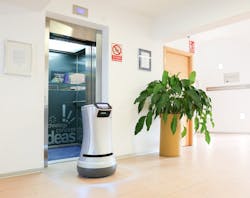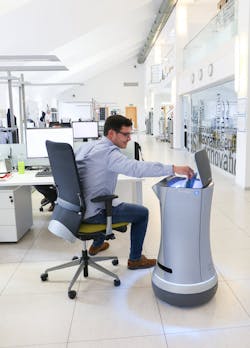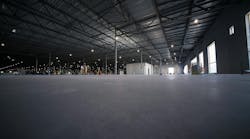Robot uprising
Imagine you are standing in an elevator, patiently waiting to arrive at your floor. Before you arrive at your destination, the cab slows to a stop to pick up another passenger.
But as the doors slide open, you see it isn’t another person at all. It’s a robot. After a slight pause, the robot rolls in and selects its desired floor. A few seconds of awkward elevator music later, the doors open again and the robot rolls out without a parting word. You are left standing there, a little confused, a little curious, and just the slightest bit unsettled.
How is it possible that a robot can use an elevator? Well, it’s simple now, thanks to thyssenkrupp Elevator North America’s new robotics interface platform.
Previously, there was no way for delivery robots to operate elevators independently. This limited their use in multistory buildings in urban centers.
But thyssenkrupp’s interface facilitates communication between the robot and the elevator, allowing them to call one and make floor selections like a human passenger.
Instead of an R2-D2–like gadget rising from the top of the robot to manually push a button, the interface allows a robot to interact with the elevator wirelessly via Wi-Fi or 4G LTE through thyssenkrupp’s TAC family of controllers. After an elevator arrives, the robot uses Machine Vision to determine if there is enough room to enter or if the cab is full. While the interface is only compatible with the manufacturer’s software and hardware, it can be installed in as little as one day.
See Also: Skanska designs personal protective equipment tailor-made for the female workforce
Thyssenkrupp has partnered with leading robot manufacturers to successfully integrate this technology in several hotel and hospital projects across the country. Robotic elevator interfaces have been used to assist with housekeeping, room and luggage service, security patrolling and concierges, and pharmaceutical and package delivery.
According to thyssenkrupp, incorporating the elevator interface with delivery robots can help building owners manage and improve in-house logistics, increase productivity, and maximize the tenant experience.
This software comes at an opportune time, as the delivery robot market is expected to nearly triple between 2018 and 2024, growing from $11.9 million to $34 million, according to a study by Markets and Markets.



